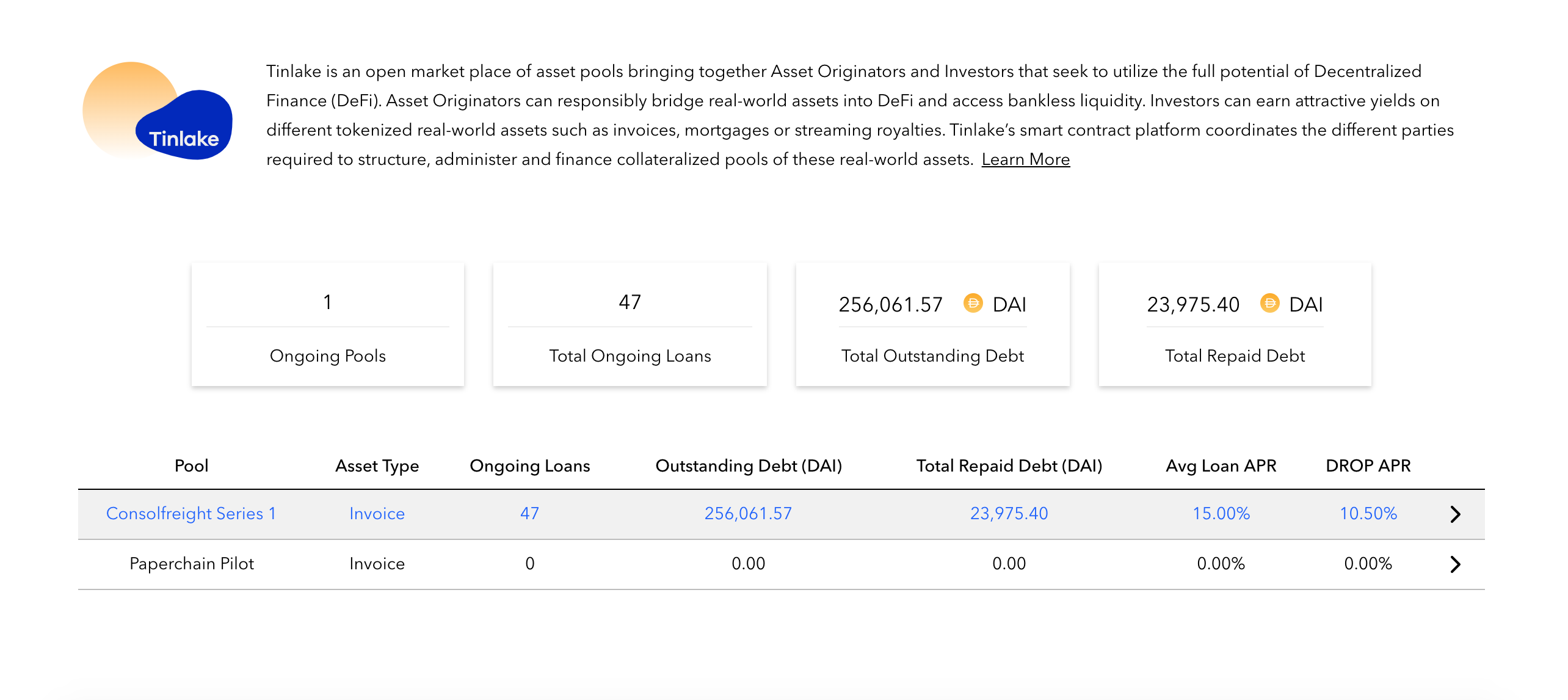

Centrifuge: Bringing Off-Chain Financial Assets to DeFi
On Monday, the long awaited financial engineering platform Centrifuge launched two products on mainnet: Tinlake and the Centrifuge Chain. Tinlake is a DeFi lending dApp that allows users to borrow on-chain assets like DAI, against pools of securitized, real-world assets like invoices and royalties on the Centrifuge Chain.
There are two types of users that can interact with Centrifuge, borrowers and investors.
Borrowers can receive financing (loans) against financial assets like invoices and royalties by securitizing them on-chain asNFTs, and borrowing DAI in return. Essentially bringing off-chain financial assets into DeFi to be used as collateral.
Investors can invest in an asset pool (eg. Spotify Invoices) to gain exposure to that asset, and supply the DAI that is borrowed to earn a yield on that lending pool.
An example of a Tinlake asset pool is:
- Asset Originator: Paperchain Inc.
- Collateral: Music Streaming Invoices from Spotify
- Average Invoice Size: $25,000
- Maturity Date: 60 days invoices
- Issuer: Paperchain Inc, Delaware
Check out Tinlake asset pools live on mainnet today or create your own! Uniquely, Tinlake also uses the tokens TIN and DROP to allow users to invest in Tinlake pools. TIN and DROP are redeemable for loans and subsequent interest, but they differ in their risk profiles and the priority in loan payback. Learn more about Tinlake’s cryptoeconomics here.
Centrifuge will continue to expand the types of assets that can be securitized in the Collateral Deposit Contract. As DeFi matures, we can envision a world where all financial and material assets are tokenized on-chain to be used as collateral that will underpin our future economies.

Tinlake DeFi Data
While Centrifuge Chain is built on Substrate, Tinlake is a dApp built on Ethereum and uses a subgraph to serve data from Centrifuge smart contracts to the lending application. The Tinlake subgraph captures data about asset pools, including their size, yield (APR), number of loans and aggregate debt. You can also query for loan-specific data like the NFT id and the loan size.
DeFi aggregators, dashboards and other applications may be interested in querying the Tinlake subgraph to:
- Add Tinlake loan volume to aggregate DeFi lending metrics
- Compare DeFi yield across lending protocols
- Derive data about NFT (real world asset) collateralization metrics
- Track borrowers and investors - new users that are securitizing unique assets on-chain
- Build applications on top of Tinlake!
Check out other DeFi Subgraphs!
If you haven’t already, make sure to check out the other DeFi subgraphs that are deployed and in use by dApps today. Subgraphs include Uniswap, Synthetix, Aave and Gnosis but there are so many more built by project teams and community members every day.
Don’t see one for a dApp you like? Build one! Take a look at The Graph docs to get started and quickly spin up a subgraph that’s open source and can be queried by anyone. You can also join our community to hear about protocol updates, features and new subgraphs!
Website: https://thegraph.com
Blog: https://thegraph.com/blog/
Telegram: https://t.me/GraphProtocol
Discord: https://discord.com/invite/vtvv7FP
